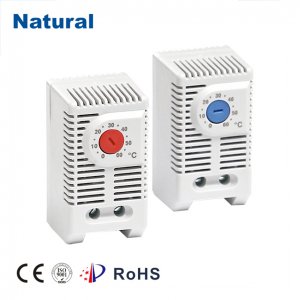Introduction

In today’s rapidly advancing world of technology, even the simplest devices have undergone remarkable transformations to enhance their functionality and energy efficiency. One such device is the thermostat temperature controller, which has evolved over the years to become an indispensable component of modern households and commercial spaces. In this article, we’ll explore the evolution, benefits, and working principles of thermostat temperature controllers. Evolution of Thermostat Temperature Controllers The concept of regulating indoor temperatures dates back centuries, but it wasn’t until the 19th century that the first thermostat was developed by Warren Johnson. This early version utilized a bimetallic strip that expanded and contracted with temperature changes, triggering mechanical adjustments to the heating system. As technology advanced, electronic thermostats emerged, allowing for more precise temperature control and programming. In recent years, smart thermostats have revolutionized temperature control. These devices leverage the power of artificial intelligence and connectivity to learn user preferences and adjust temperatures accordingly. Through smartphone apps and integration with voice assistants, users can now control their thermostats remotely, optimizing comfort while minimizing energy consumption. Benefits of Thermostat Temperature Controllers Energy Efficiency: One of the most significant advantages of modern thermostat temperature controllers is their ability to optimize energy usage. By programming temperature setbacks during periods of lower occupancy or sleep, users can reduce heating and cooling demands, leading to lower utility bills and a reduced carbon footprint. Customization: With programmable and smart thermostats, users can tailor their indoor climate to their preferences. These devices can adapt to different schedules and even learn from users’ behaviors to create personalized temperature profiles. Remote Access: The integration of smart technology allows users to control their thermostats remotely. This means you can adjust the temperature before arriving home or ensure that your commercial space is comfortable before a meeting, all from the convenience of a smartphone. Data Insights: Many smart thermostats provide detailed energy consumption reports and suggestions for further efficiency improvements. This information empowers users to make informed decisions about their heating and cooling habits. Working Principles of Thermostat Temperature Controllers Traditional thermostat temperature controllers work by detecting temperature changes and activating a switch to turn the heating or cooling system on or off. The bimetallic strip or electronic sensors are central to this operation. Smart thermostats take this a step further. Equipped with advanced sensors, these devices monitor not only temperature but also factors such as humidity and occupancy. Machine learning algorithms analyze this data over time, adapting to users’ preferences and creating optimized schedules. Some models even consider external weather forecasts to preemptively adjust indoor temperatures. Conclusion The humble thermostat temperature controller has come a long way since its inception. From basic mechanical adjustments to sophisticated smart devices, the evolution of temperature control technology showcases the marriage of comfort and efficiency. As we continue to prioritize sustainable living and energy conservation, the role of thermostat temperature controllers becomes increasingly crucial. Whether it’s the convenience of remote access, the insights provided by data analysis, or the ability to seamlessly integrate with our lifestyles, these controllers exemplify how innovation enhances our daily lives while contributing to a greener future.